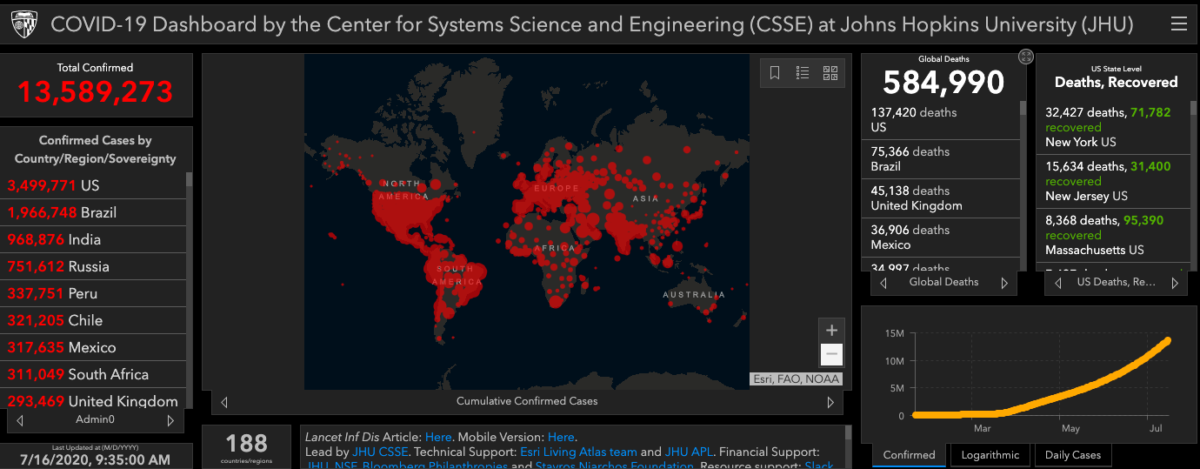With tracking of COVID-19 trends essential to efforts to prevent the spread and reopen, data that’s reported by hospitals has been a key focus in the pandemic.
On Wednesday, the path that data travels came under scrutiny, as The New York Times reported that the Trump administration ordered hospitals to sidestep the Centers for Disease Control and instead send information on hospital beds and intensive care unit capacity to a database run by the U.S. Department of Health and Human Services, which oversees the CDC and has politically appointed leadership. By Thursday morning, the data was already gone from the CDC’s source, Ryan Panchadsaram of data tracking site Covid Exit Strategy told CNBC.
This marked a change to how things were being done in the pandemic to date, as well as historically. The administration said the CDC system was inadequate and the shift designed to streamline the data gathering process. But it has brought scrutiny about whether transparency will suffer.
“Historically, CDC has been the place where public health data has been sent, and this raises questions about not just access for researchers but access for reporters, access for the public to try to better understand what is happening with the outbreak,” Jen Kates, the director of global health and HIV policy with the Kaiser Family Foundation, told The Times.
However, while questions swirl about the national data and hospitals switch tools mid-pandemic, a global source of coronavirus data for the public will not be affected by the move. The COVID-19 dashboard created by Johns Hopkins University’s Center for Systems Science and Engineering, which has been tracking the spread of the virus since before we were all quarantined, didn’t use the CDC data.
“Many have asked whether this week’s change in hospital data reporting will impact our coronavirus dashboard. The answer is no,” the university said in a Thursday tweet. “We do not currently source any data from the CDC, so the reporting on our dashboards will not be affected.”
Many have asked whether this week’s change in hospital data reporting will impact our coronavirus dashboard. The answer is no. We do not currently source any data from the CDC, so the reporting on our dashboards will not be affected.https://t.co/J6k60Kni8Y
— Johns Hopkins University (@JohnsHopkins) July 16, 2020
It’s another sign of staying power from a data source that was developed by technologists who responded quickly to the need to understand how the new virus was moving. The Hopkins-built map became a go-to source early on in the year as it offered real-time info at a single web source, and viewers kept on hitting refreshing throughout the pandemic. The team has also gotten more granular with data and added a U.S. map. They told CNN in a weekend profile of the people behind the map that it receives 3 to 5 billion interactions a day. The team credited the dashboard’s early movement and multiple data sources as among the reasons it stands out. Plus, maps.
“Not to be cliche, but a picture is worth a thousand words,” Ryan Lau, a key data collection member of the team who is a graduate software engineer at the Laurel-based JHU Applied Physics Laboratory, told CNN.
Before you go...
Please consider supporting Technical.ly to keep our independent journalism strong. Unlike most business-focused media outlets, we don’t have a paywall. Instead, we count on your personal and organizational support.
Join our growing Slack community
Join 5,000 tech professionals and entrepreneurs in our community Slack today!

The person charged in the UnitedHealthcare CEO shooting had a ton of tech connections

From rejection to innovation: How I built a tool to beat AI hiring algorithms at their own game

Where are the country’s most vibrant tech and startup communities?


